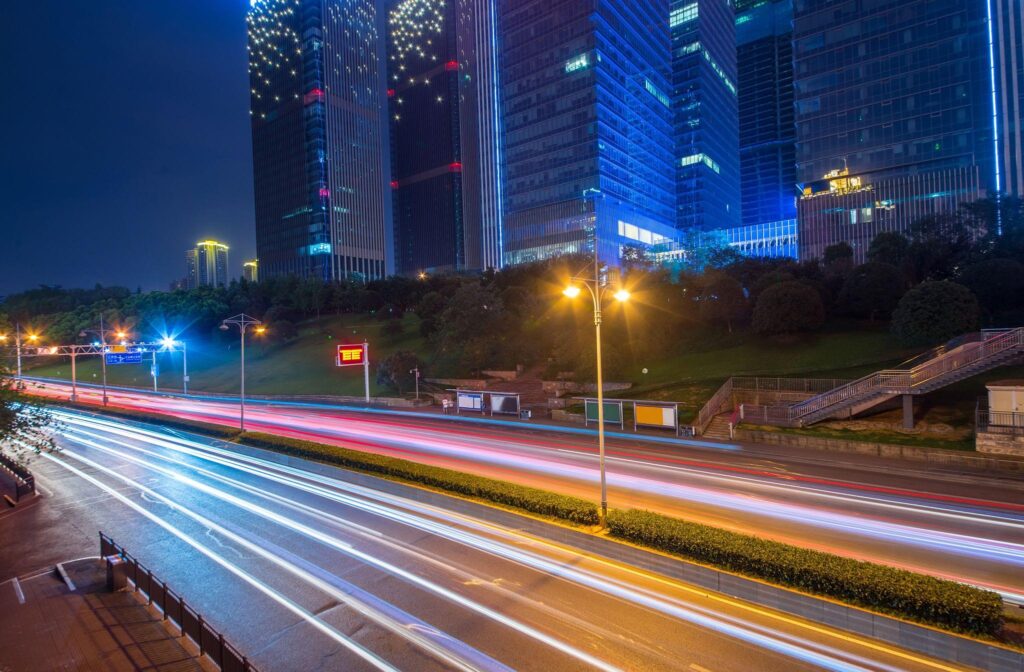Outline
- Introduction
- Current Waterproof Testing
- Standard Testing Procedures
- Materials and Tools Used for Testing
- Case Study: IPX5 Testing Results
- Improvement Steps
- Structural Enhancements to Improve Water Resistance
- Use of Advanced Materials for Better Sealing
- Techniques for Minimizing Water Ingress Points
- Regular Maintenance and Inspection Schedules
- Future Functionality
- Integration of Smart Sensors for Automatic Brightness Adjustment
- Expansion of IoT Connectivity for Remote Monitoring and Control
- Energy-Saving Modes and Adaptive Lighting Based on Weather Conditions
- Enhanced Durability and Reliability Under Extreme Weather Conditions
- Final Words
Street light sensor are critical components in smart lighting systems being exposed to harsh environmental elements all year round. Ensuring their waterproof performance is vital for maintaining operational efficiency and preventing system failures.
Waterproofing standards, such as IP (Ingress Protection) ratings, play a key role in classifying these devices’ resistance to water and dust intrusion, with testing methods designed to simulate harsh outdoor conditions.
This article will explore the current testing methods for waterproofing Street light sensors, steps to enhance their resistance, and how future functionality can further improve durability and smart capabilities.

Current Waterproof Testing
In order to withstand extreme weather conditions, it is imperative that light sensors are waterproofed. Most suppliers depend on the Ingress Protection (IP) rating system; the most commonly used are IPX5 and IPX6. Such ratings involve tests that examine how enclosures withstand water entering at different angles and pressures, which is necessary for any reliable outdoor equipment.
Standard Testing Procedures
IPX5 ratings determine the effectiveness of the device against water during normal use conditions. The test involves exposing the sensors to a water spray directed from a nozzle with a flow rate of 12.5 liters per minute and a time range of 3 minutes.
The water is directed at the device from multiple angles to mimic real-world conditions, such as heavy rain. This test ensures the device remains functional without internal water ingress that could compromise its electronic components. However, it’s important to note that IPX5 is not suitable for immersion but protects against water jets.
Materials and Tools Used for Testing
Testing requires specialized tools, including water jet nozzles, controlled water sources, and waterproof testing chambers. These chambers allow for precise control of the pressure, angle, and duration of water exposure.
Materials like silicone gaskets, rubber seals, and water-resistant coatings are crucial in the design of sensors to meet IP standards. Devices are placed on turntables or in fixtures to expose all surfaces during the test, ensuring comprehensive assessment.
Moreover, post-test inspections verify if water has penetrated the enclosure or affected the sensor’s performance.
Case Study: IPX5 Testing Results
An experiment by Infinita Lab on an IPX5-rated DUT demonstrated the device’s ability to withstand heavy rain conditions without malfunctioning. After testing, the sensor was disassembled to check for internal moisture, and none was found, confirming the effectiveness of its seals and protective materials.
This real-world scenario validated the sensor’s suitability for outdoor installations in environments exposed to periodic rain or spray from sprinklers. However, during further high-pressure testing (e.g., IPX6), small leaks were observed, showing the limitations of IPX5.
Improvement Steps
To enhance the waterproof performance of street light sensors, several structural and material innovations are essential. By addressing weaknesses in design and materials, these sensors can achieve better resistance to environmental factors, including moisture, dust, and extreme weather conditions.
Let’s examine the key improvement steps.
Structural Enhancements to Improve Water Resistance
Structural improvements often focus on sealing all potential ingress points for water. This includes using reinforced enclosures with tight-fitting gaskets that offer compression resistance, ensuring they maintain a tight seal over time despite environmental pressures.
Techniques like using protective housings and built-in drainage systems also minimize water accumulation within the fixture, preventing moisture buildup and internal damage.

Use of Advanced Materials for Better Sealing
Advanced sealing materials like silicone rubber, silicone foams, and polyurethane play a critical role in waterproofing light sensors. These materials not only resist water but also withstand high and low-temperature extremes, maintaining elasticity and sealing capacity over time.
Silicone and polyurethane offer excellent protection against UV rays, ozone, and environmental wear, preventing premature degradation. Furthermore, breathable waterproof membranes, made from materials like expanded polytetrafluoroethylene (ePTFE), allow air and vapor to escape while blocking water, ensuring sensors remain both cool and dry.
Techniques for Minimizing Water Ingress Points
To prevent water ingress, focusing on areas like wire entry points, seals, and joints is crucial. Applying high-quality silicone caulking or using gel-filled connectors for wiring can seal off potential water entry points.
Additionally, weatherproof sealing tapes can be applied around fixtures for added protection. Reducing the number of seams and ensuring a single-cast enclosure are also effective methods to minimize water entry.
Techniques such as potting, where electronic components are encapsulated in protective compounds like epoxy or silicone, further prevent moisture from reaching sensitive internal parts.
Regular Maintenance and Inspection Schedules
Careful upkeep can significantly boost the life span of any device, and street light sensors are no exception. To achieve prolonged waterproofing, sections like seals, gaskets, and joints should be inspected for signs of wear or damage.
Further replacing deteriorated parts is recommended to mitigate the possibility of water ingress. Depending on environmental conditions, maintenance cycles are typically recommended annually or semi-annually.
Future Functionality
With the integration of smart technologies, light sensors are evolving. These innovations are not only improving their efficiency but also expanding the potential of smart city infrastructure. Below given is a brief look.
Integration of Smart Sensors for Automatic Brightness Adjustment
The upcoming street light sensors will integrate smart sensors. These include ambient light sensors, occupancy detectors, and motion sensors.
These sensors analyze environmental conditions, such as sunlight levels and nearby activity, allowing lights to dim or brighten as needed, optimizing energy use. This dynamic adjustment maximizes energy efficiency without sacrificing functionality.
Expansion of IoT Connectivity for Remote Monitoring and Control
The advancement of street lighting also involves improved IoT integration, which allows for the monitoring and control of lighting systems across distances.
By using IoT lighting control systems, cities can obtain up-to-date information on power consumption, malfunctioning lights, and weather conditions to address problems faster and organize maintenance more efficiently.
IoT integration also facilitates centralized control systems, where multiple lights can be monitored from a single platform. This creates the potential for remote diagnostics, predictive maintenance, and improved operational efficiency.
Energy-Saving Modes and Adaptive Lighting Based on Weather Conditions

Street light sensors are evolving to include adaptive lighting modes that respond to changing weather conditions. For example, during foggy or rainy weather, lights can increase in brightness for better visibility, while during clear nights, they can dim to save energy.
These modes are powered by weather sensors that detect changes in temperature, humidity, and light levels, automatically adjusting the lighting output. Such systems are vital for reducing unnecessary energy consumption, especially in urban environments, where the demand for lighting can fluctuate with seasonal changes.
Enhanced Durability and Reliability Under Extreme Weather Conditions
Future sensors are designed with enhanced durability to withstand extreme weather conditions. Using weatherproof casings and robust internal components, these systems ensure long-term reliability, even in harsh outdoor environments.
Improvements in sealing materials and thermal management technologies also contribute to maintaining the functionality of the weather.
Final Words
Enhancing the waterproof performance and functionality of street light sensors is crucial for ensuring their long-term reliability and efficiency, especially in harsh environmental conditions. By adopting advanced materials, smart sensors, and IoT connectivity, these sensors can achieve optimal performance. For reliable and high-quality street light sensors, Chi-Swear offers a range of solutions designed to meet the most demanding standards in waterproofing and smart functionality.
External Links
- https://www.electronicshub.org/ipx5-rating/
- https://infinitalab.com/product-testing-service/ingress-protection-water-jets-and-powerful-water-jets-tests-ipx5-ipx6/
- https://gardeniaorganic.com/how-to-waterproof-outdoor-lights/
- https://blog.marianinc.com/blog/outdoor-lighting-and-silicone-sealing-gaskets






